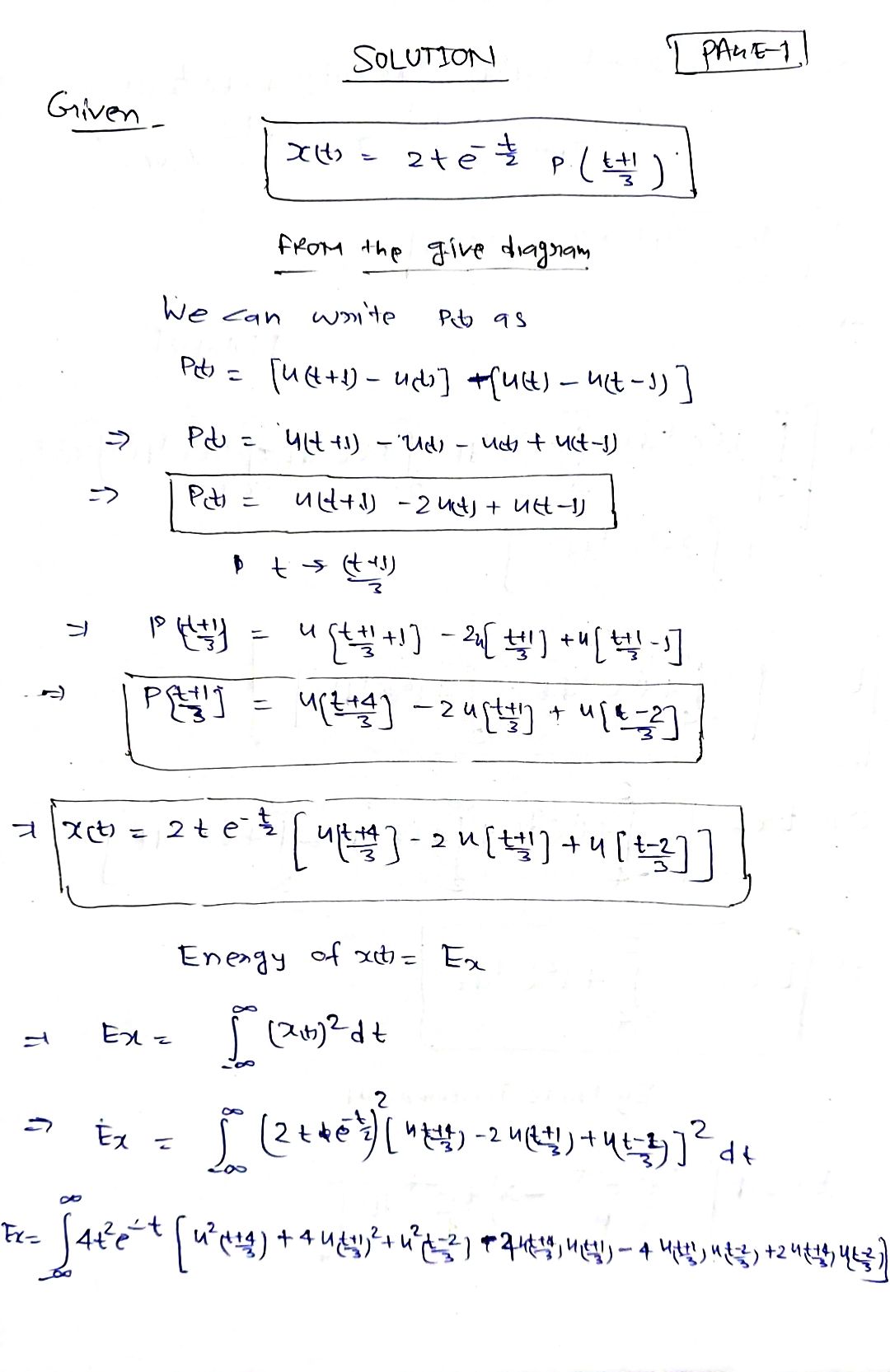Find the energy of r(t) = 1 0 2te- p (¹), where p(t) is the pulse -5 -4 -3 -2 -1 0 t 1 2 3 4 5
Find the energy of r(t) = 1 0 2te- p (¹), where p(t) is the pulse -5 -4 -3 -2 -1 0 t 1 2 3 4 5
Introductory Circuit Analysis (13th Edition)
13th Edition
ISBN:9780133923605
Author:Robert L. Boylestad
Publisher:Robert L. Boylestad
Chapter1: Introduction
Section: Chapter Questions
Problem 1P: Visit your local library (at school or home) and describe the extent to which it provides literature...
Related questions
Question
Hello. Could you help me with this problem? I'm not sure I'm doing it right.
Thank you for the time and help.

Transcribed Image Text:**Problem Statement:**
Find the energy of \( x(t) = 2te^{-\frac{t}{2}} p\left(\frac{t+1}{3}\right) \), where \( p(t) \) is the pulse.
**Graph Explanation:**
The graph represents a pulse function \( p(t) \) on a Cartesian plane. The vertical axis represents the amplitude of the pulse, and the horizontal axis represents time \( t \).
- The amplitude oscillates between 0 and 1.
- The pulse is centered around \( t = -1 \) with a width spanning from \( t = -3 \) to \( t = 3 \).
- The pulse maintains an amplitude of 1 between \( t = -1 \) and \( t = 1 \).
- Outside this interval, the amplitude is 0, indicating that the pulse is active only in this range.
This pulse function is used in the expression for \( x(t) \) to determine the energy of the signal.
Expert Solution
Step 1

Step by step
Solved in 3 steps with 3 images

Knowledge Booster
Learn more about
Need a deep-dive on the concept behind this application? Look no further. Learn more about this topic, electrical-engineering and related others by exploring similar questions and additional content below.Recommended textbooks for you

Introductory Circuit Analysis (13th Edition)
Electrical Engineering
ISBN:
9780133923605
Author:
Robert L. Boylestad
Publisher:
PEARSON

Delmar's Standard Textbook Of Electricity
Electrical Engineering
ISBN:
9781337900348
Author:
Stephen L. Herman
Publisher:
Cengage Learning

Programmable Logic Controllers
Electrical Engineering
ISBN:
9780073373843
Author:
Frank D. Petruzella
Publisher:
McGraw-Hill Education

Introductory Circuit Analysis (13th Edition)
Electrical Engineering
ISBN:
9780133923605
Author:
Robert L. Boylestad
Publisher:
PEARSON

Delmar's Standard Textbook Of Electricity
Electrical Engineering
ISBN:
9781337900348
Author:
Stephen L. Herman
Publisher:
Cengage Learning

Programmable Logic Controllers
Electrical Engineering
ISBN:
9780073373843
Author:
Frank D. Petruzella
Publisher:
McGraw-Hill Education

Fundamentals of Electric Circuits
Electrical Engineering
ISBN:
9780078028229
Author:
Charles K Alexander, Matthew Sadiku
Publisher:
McGraw-Hill Education

Electric Circuits. (11th Edition)
Electrical Engineering
ISBN:
9780134746968
Author:
James W. Nilsson, Susan Riedel
Publisher:
PEARSON

Engineering Electromagnetics
Electrical Engineering
ISBN:
9780078028151
Author:
Hayt, William H. (william Hart), Jr, BUCK, John A.
Publisher:
Mcgraw-hill Education,